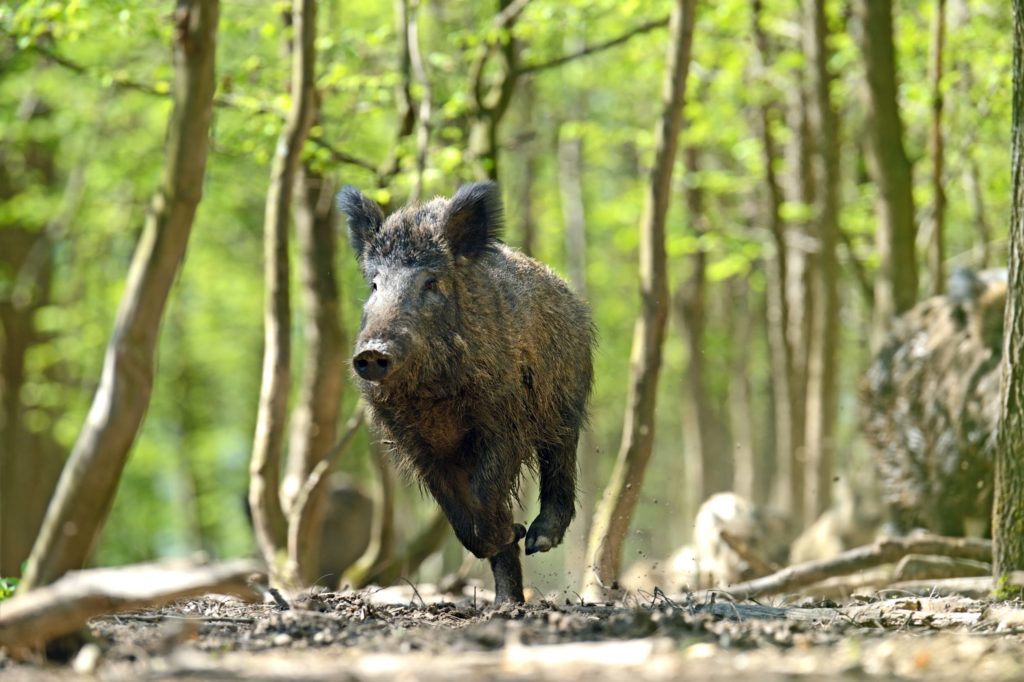
MUCC Outreach Update: Feral Swine
At Michigan United Conservation Clubs, a large part of what we do is education and outreach to combat the spread of invasive species. Funding for our outreach and communications on feral swine is made possible through a grant from the Michigan Invasive Species Program (www.michigan.gov/invasives).
Our MSU Glassen Scholar Ian FitzGerald wanted to learn more about why MUCC cares and what MUCC can do about it. Here’s his interview with MUCC’s Education Director Shaun McKeon.
————————————————–
Feral swine can reproduce rapidly by having two litters per year of 4 to 12 piglets. This is bad news because they threaten the health of our wildlife, agriculture and overall native ecosystem. Feral swine feed on almost every type of crop such as corn, grain, wheat, oats, fruits, and vegetables. Trampling and eating crops can devastate a farmers yield and land. The land can be left stripped of its crops which leaves it vulnerable to erosion and invasive plants. Feral swine also harm our forests by eating saplings detering tree growth, and in turn harming wildlife habitat.
Utilizing TRACKS magazine, designed for a target 4th grade science curriculum, can aid our efforts by informing kids and parents about species that they had no clue were even invasive or existed. It teaches them the dangers that the species pose to our environment and native species. In April of this year, our TRACKS magazine released a special issue dedicated to feral swine. This TRACKS edition was slightly different than the rest. The issue was distributed to 20,000 kids in recreation safety programs including hunters education, bowhunting education, and trapper education.
Q: What other methods of outreach other than the TRACKS magazine is MUCC working on to combat feral swine?
A: MUCC has been facilitating a paid media campaign in various outdoor news publications and conducting targeted hunter outreach events over the last two years.
For youth, we have also created an education component down at our Michigan Out of Doors Youth Camp where we use telemetry tracking to highlight how biologists track feral swine in the wild. As we know biologists use GPS collars to track feral swine in the wild for research and monitoring purposes, we decided to give our campers the opportunity to learn about this with a hands-on approach.
As part of the feral swine curriculum, one of our counselors would be a collared feral swine. This counselor would then journey into the woods on our property away from the rest of the group. Working under the guidance of our staff, the campers would then work together setting up the telemetry equipment and operating it. The goal was to give a field-based tracking experience teaching campers not only why wildlife and invasive species surveying is important but also to help them build technical skills they may use for a career one day. Over the course of the summer in 2018, at least 70 campers ages 9-14 were able to take part in these lessons and invasive species curriculum.
Q: How does distributing a TRACKS issue on invasive species to kids help to with controlling feral swine?
A: It creates awareness. Kids learn about it at school or through hunters safety and then they bring it home to the parents. Its amazing how many adults have forgotten a lot of science lessons they might have learned back in school–basic ecology principles, the importance of habitat, and terminology are things that TRACKS teaches kids, but these are also good reinforcements for the parents as well. The more people aware of this issue the more people we have to potentially report a sighting. This can help to stop the spread of the issue in itself.
Q: In what ways can an MUCC member help get involved with stopping the spread of feral swine or invasive species in general?
A: Reporting is the most important thing that the DNR and the USDA Wildlife Services want to assist in control efforts—there is such a small population left that we need the eyes of every person in the field looking out for feral swine.
If you see one while you are out hunting, hiking or fishing then mark the location and report as soon as possible. You can also shoot feral swine if you have a valid hunting license of any type. Private property owners may also shoot any feral swine on their property and do not need to be in possession of a hunting license. Report any harvesting or sightings to USDA Wildlife Services at 517-336-1928.

Do we know where feral swine are frequently seen more often than others?